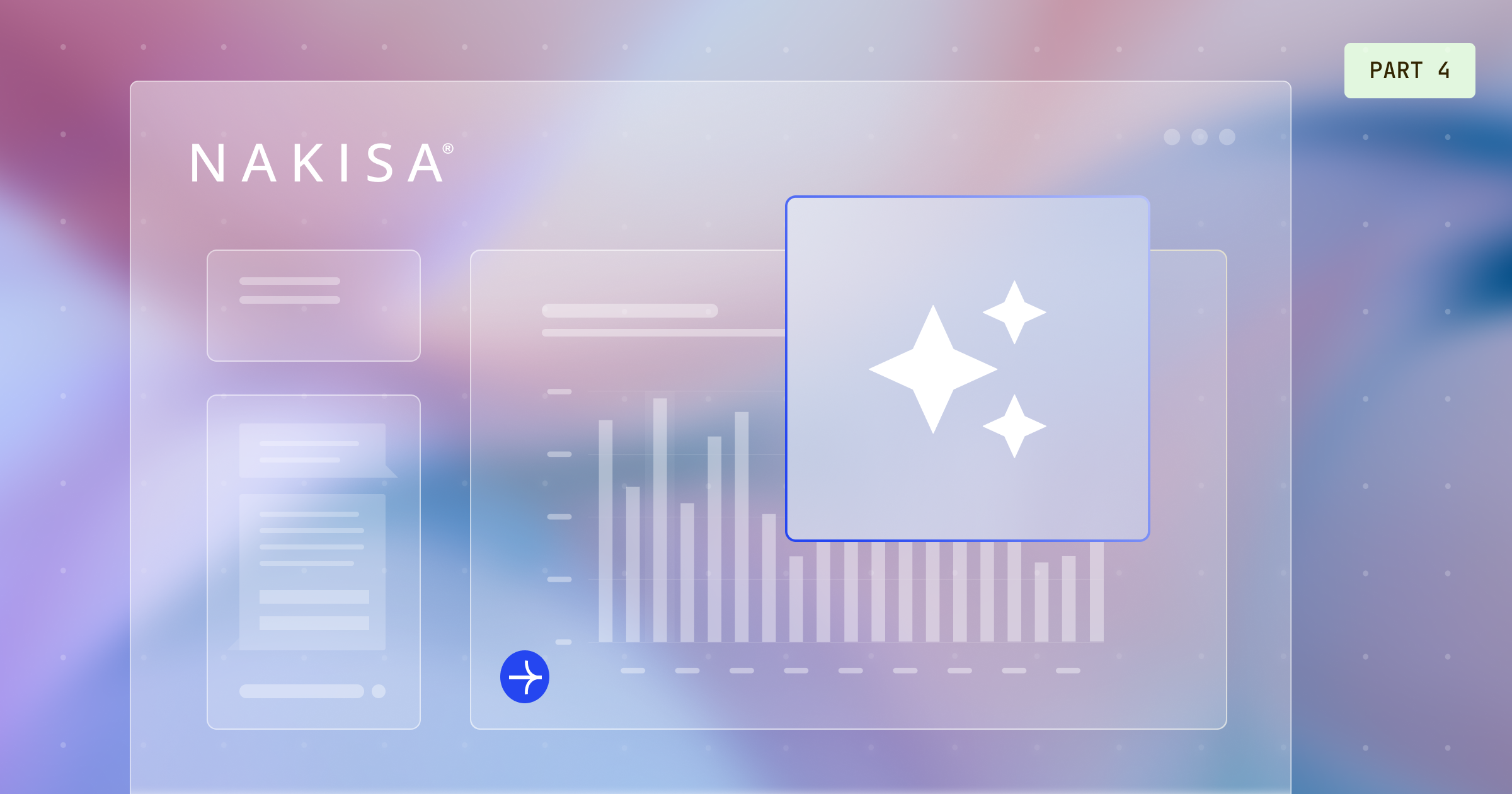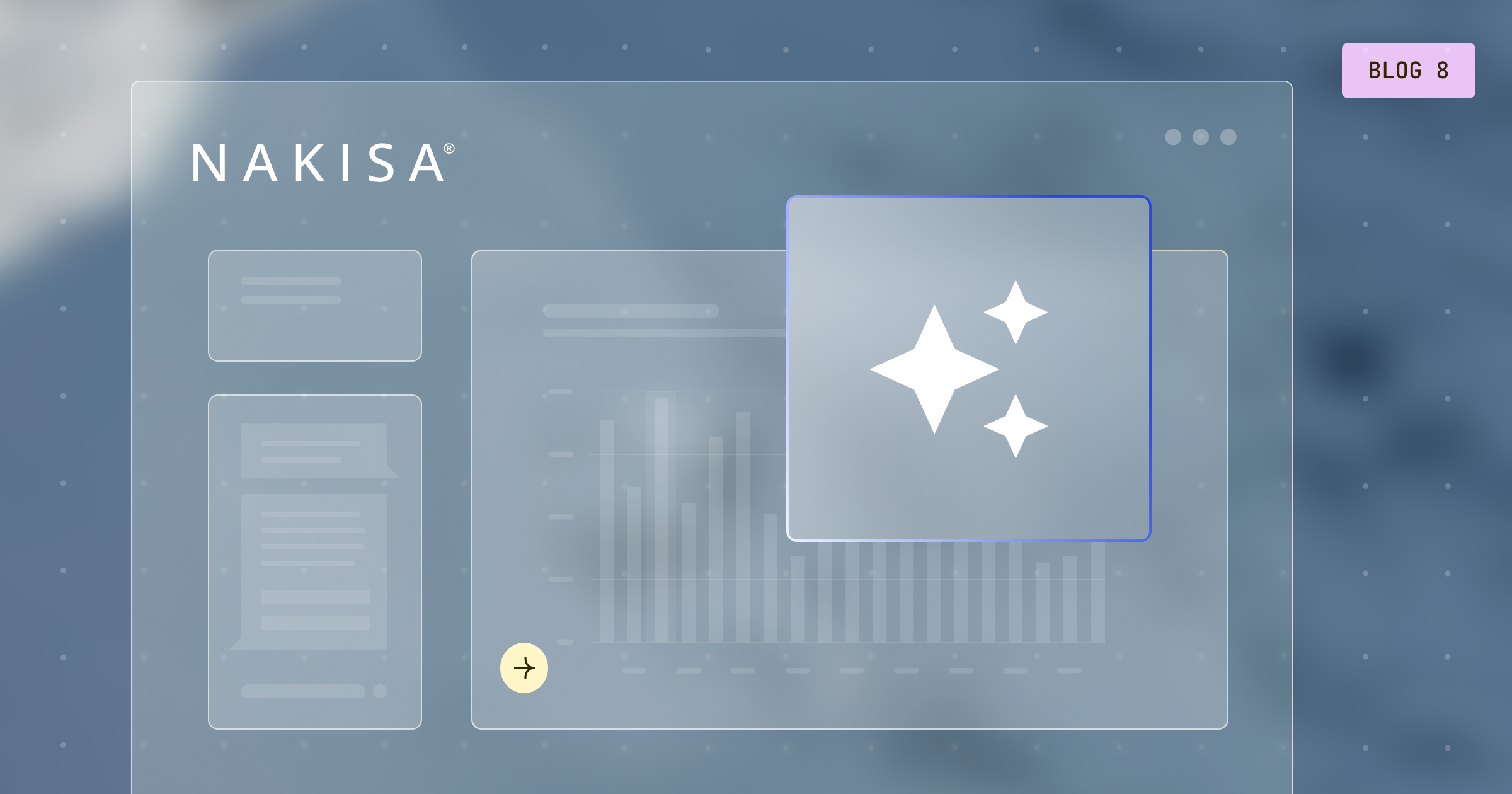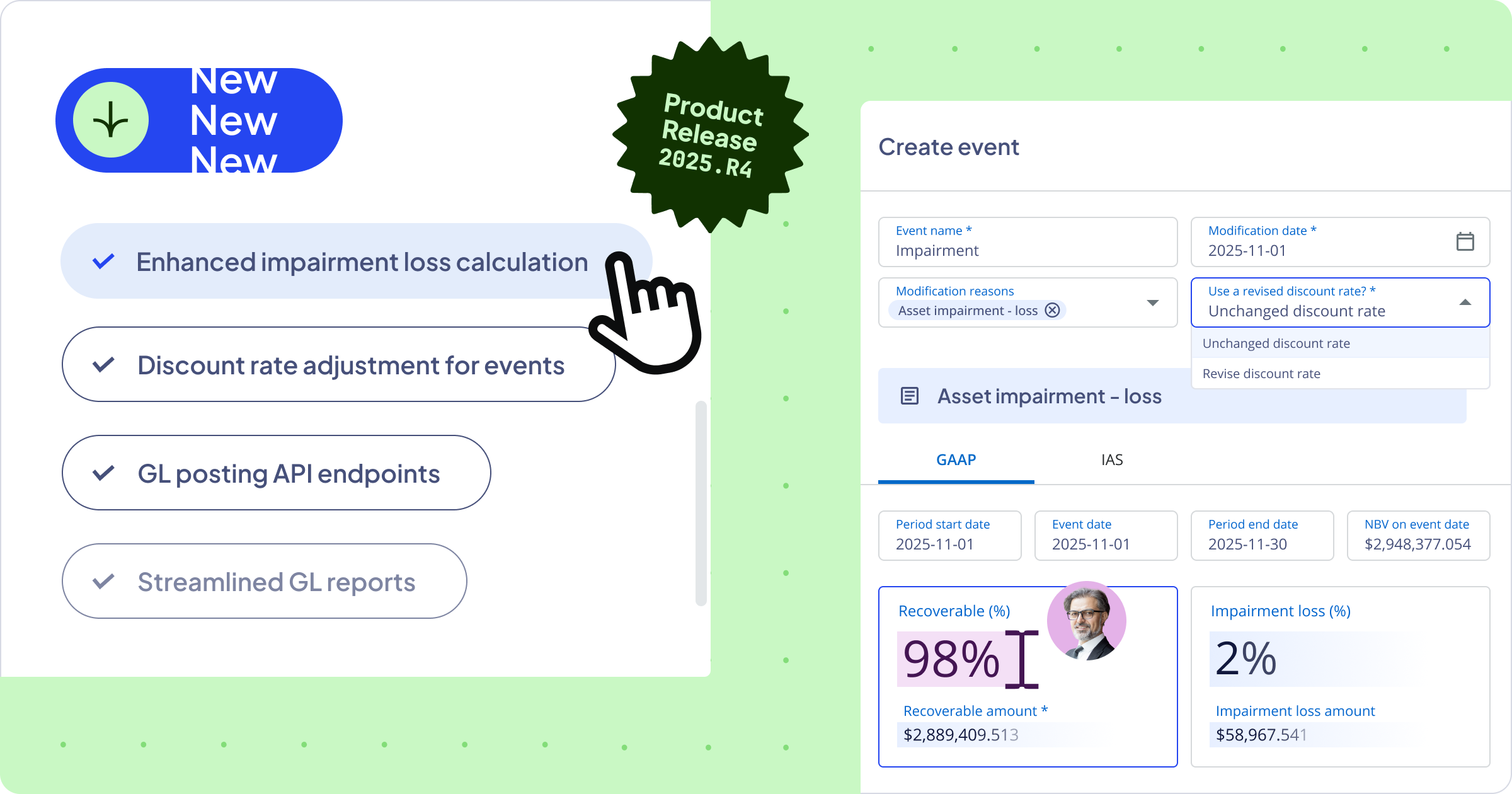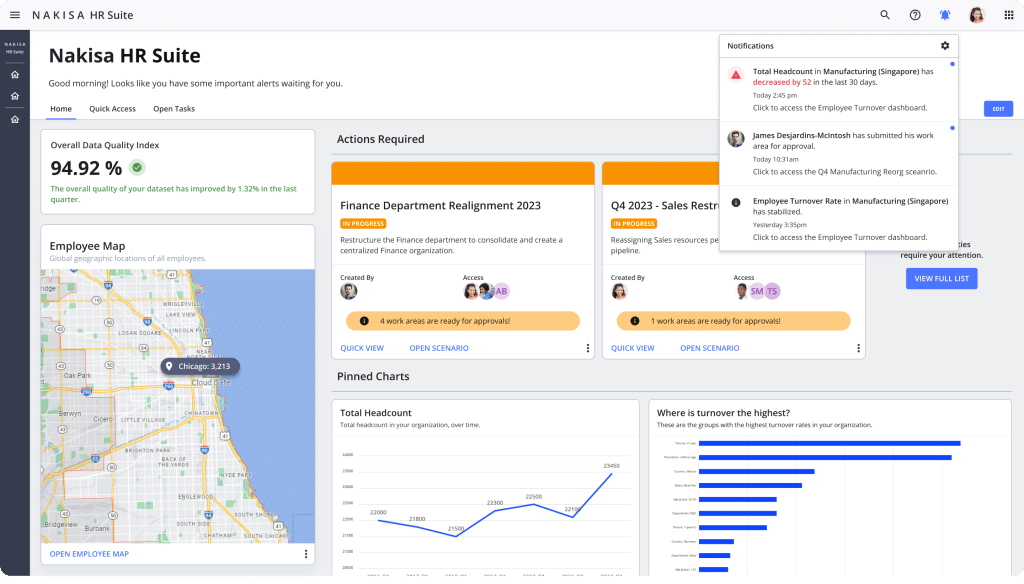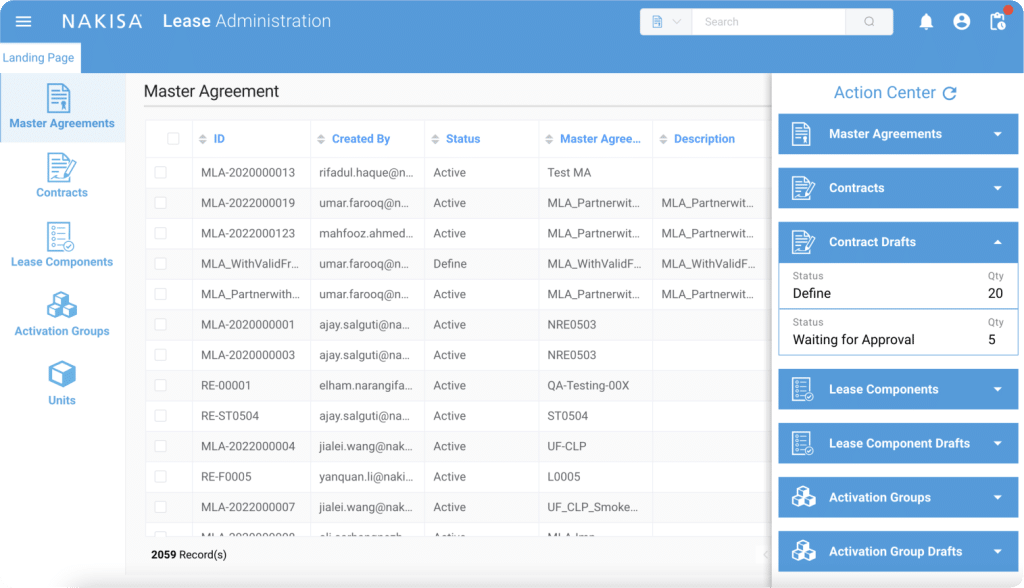The agents at work
When a user enters a query, the system doesn’t just “search.” It activates a network of coordinated agents:
- Structured Data Retrieval Agent: Retrieves precise answers from databases and tabular datasets, ensuring accuracy and reliability.
- Unstructured Data Retrieval Agent: Navigates documents, reports, and natural language content to extract meaning from complex text.
- Statistical & Predictive Analysis Agent: Runs advanced calculations, forecasts, and simulations to anticipate what could happen next.
- Graph / Charting Agent: Translates data into visual insights. Clear, interactive charts and graphs that reveal patterns at a glance.
- Semantic Form Generation UI Agent: Dynamically detects when extra input is needed and generates user-friendly forms to capture it seamlessly.
- Context & Memory Retention Tools: Ensure continuity by remembering past queries, scenarios, and user preferences to provide consistent, evolving support.
- Result Reuse & Instant Response Tool: Instantly retrieves and presents previously generated results, avoiding unnecessary recomputation.
- Planning & Orchestration Agent: Serves as the intelligent mediator that decides whether a query requires multi-agent coordination and detailed planning.
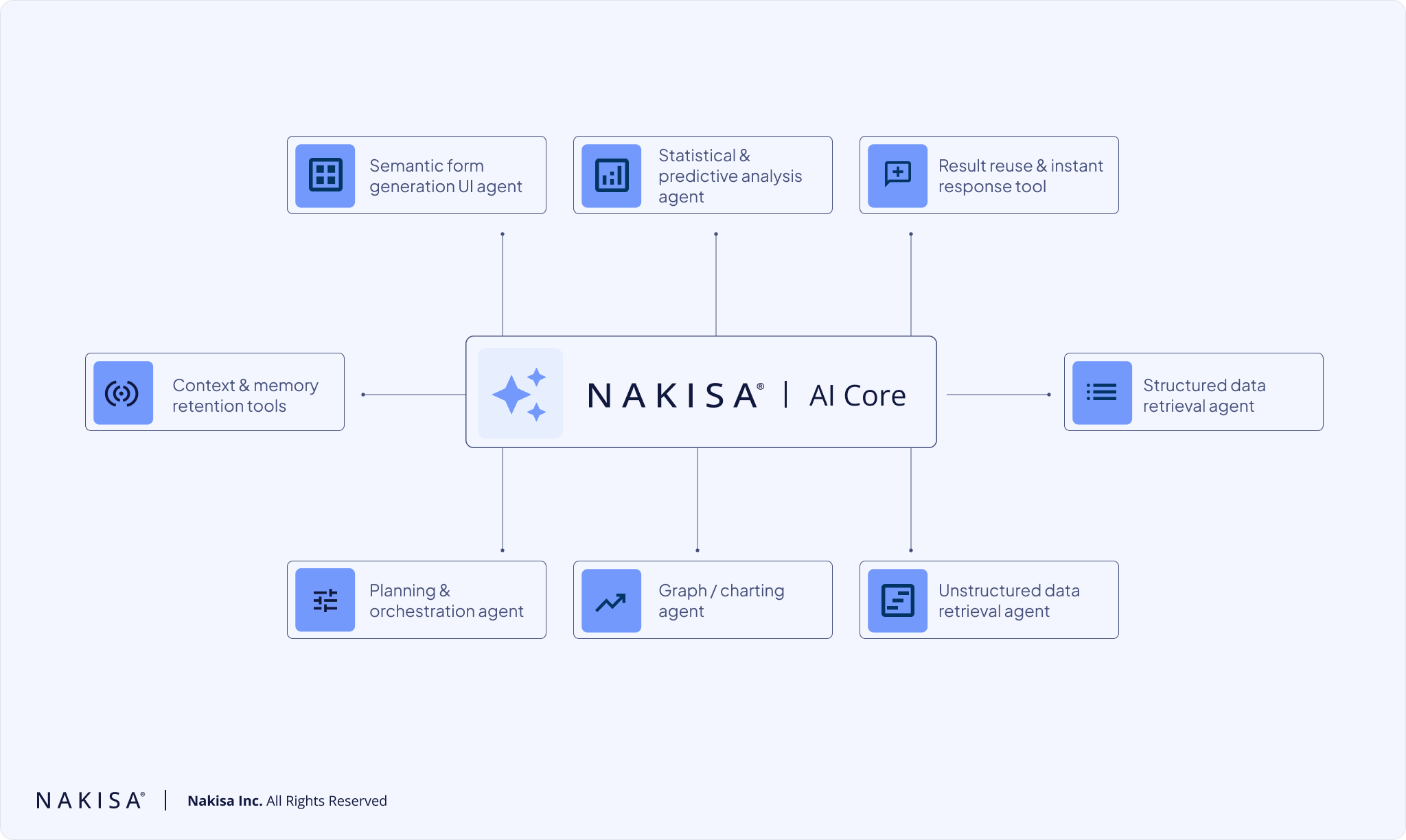
Let's deep dive into each area.
Structured Data Retrieval Agent
This agent specializes in extracting precise answers from structured sources like databases, spreadsheets, and tabular datasets. It ensures data accuracy, consistency, and reliability, making it indispensable for queries involving financials, KPIs, or operational metrics. Directly accessing structured records it reduces the risk of misinterpretation and speeds up the decision-making cycle.
Unstructured Data Retrieval Agent
Most organizational knowledge lives in documents, reports, and natural language content. This agent is designed to navigate, interpret, and extract meaning from unstructured text, whether it’s lengthy reports, meeting transcripts, or knowledge bases. It bridges the gap between raw textual information and actionable insights, ensuring that no critical knowledge remains hidden.
Statistical & Predictive Analysis Agent
More than just calculations, this agent applies statistical models, forecasting techniques, and scenario simulations to anticipate outcomes before they happen. Leaders can explore “what if” scenarios, evaluate probabilities, and plan proactively with foresight. From sales forecasts to risk modeling, this agent transforms data into a strategic advantage.
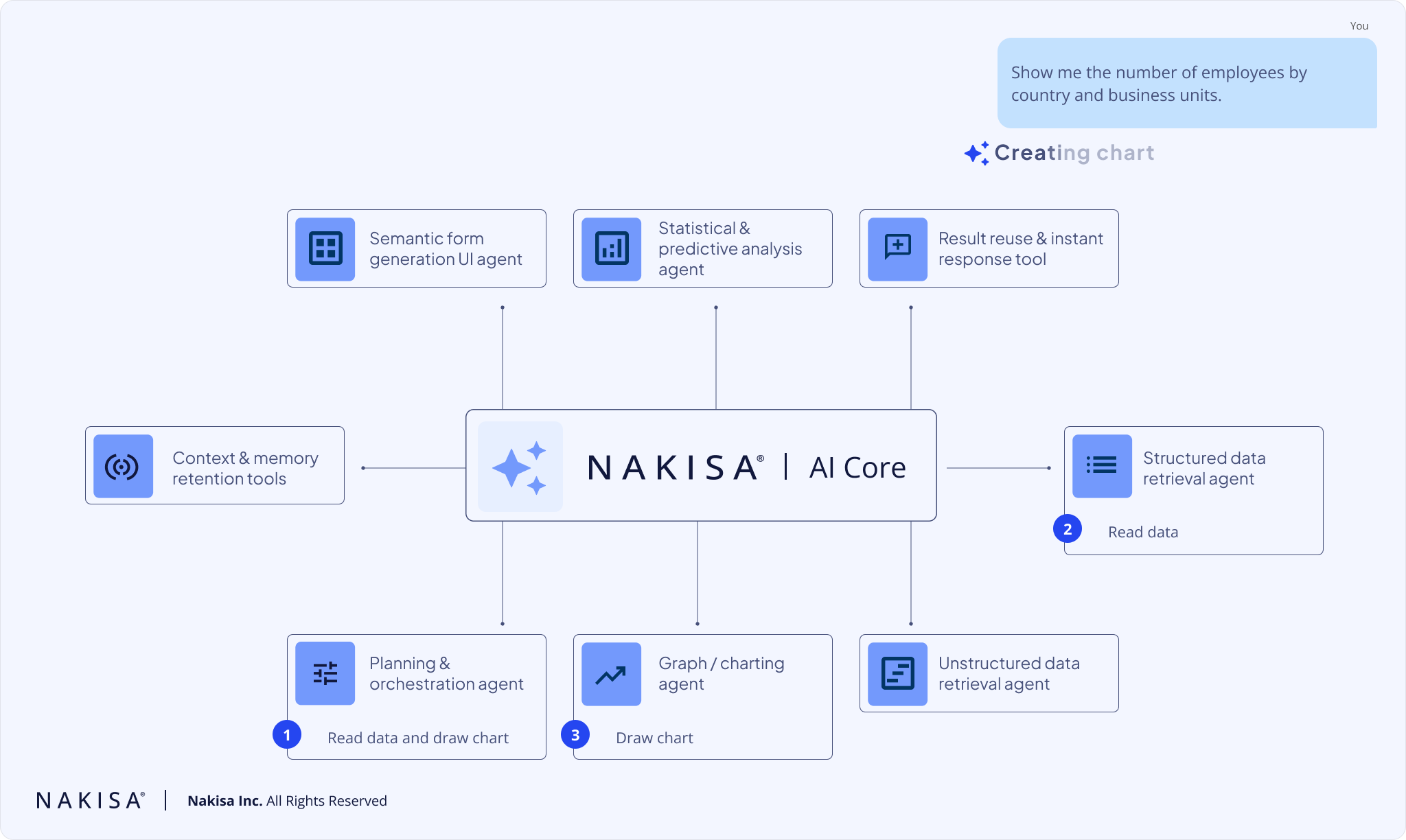
Graph / Charting Agent
Numbers tell a story, but visuals make it resonate. This agent transforms data retrieved by other agents into clear, interactive charts and graphs that highlight trends, correlations, and anomalies at a glance. By visualizing complex datasets, it empowers users to grasp patterns quickly, communicate findings effectively, and support decisions with compelling evidence.
Semantic Form Generation UI Agent
Decision-making often requires additional context or inputs. This agent dynamically recognizes when extra details are needed and generates intuitive, user-friendly forms to capture that information seamlessly. Instead of interrupting the flow, it enhances it. Ensuring the system collects the right data while keeping the user experience smooth and natural.
Context & Memory Retention Tools
Great decisions rely on continuity. These tools ensure the system remembers past queries, preferences, and scenarios, creating a personalized and evolving interaction. By maintaining context, the system delivers consistent insights, reduces repetitive input, and supports long-term strategic thinking, becoming more effective the more it’s used.
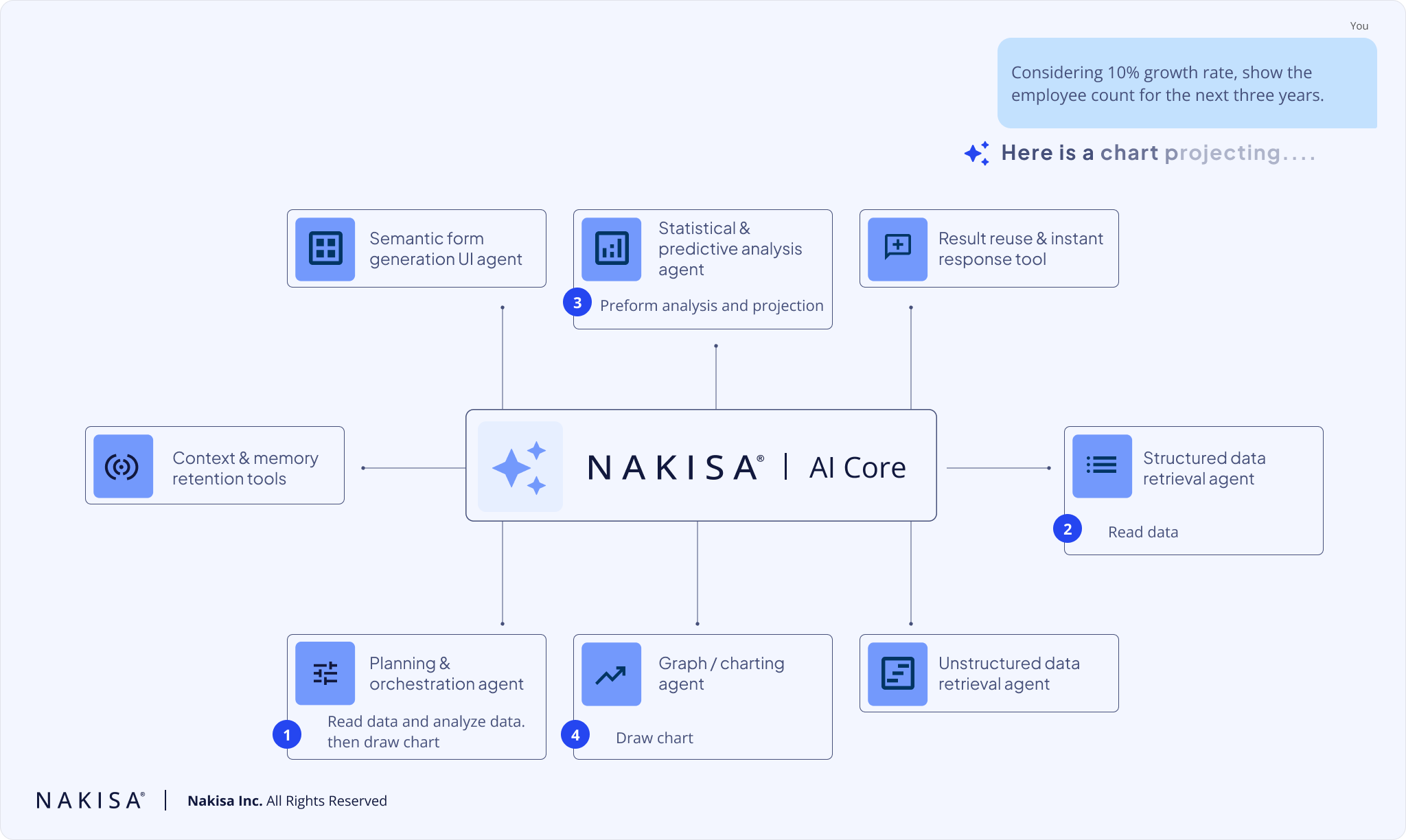
Result Reuse & Instant Response Tool
This capability acts as a memory cache for the system. Instead of always initiating a new round of planning, retrieval, or analysis, it first checks whether an identical or similar query has already been answered. If so, it delivers the result instantly, saving both time and computing resources. For users, this means faster responses and less waiting; for the system, it ensures efficiency and reduces redundant processing.
Planning & Orchestration Agent
This agent functions as the “conductor” of the decision intelligence ecosystem. When a query arrives, it evaluates its complexity: some questions can be answered directly, while others may require a combination of structured retrieval, unstructured search, predictive analysis, and visualization. The Planning & Orchestration Agent determines the best execution path, breaks down the query into steps, and coordinates the involved agents accordingly. By acting as a smart orchestrator, it ensures every query is handled with just the right level of rigor. Balancing speed, precision, and resource usage.
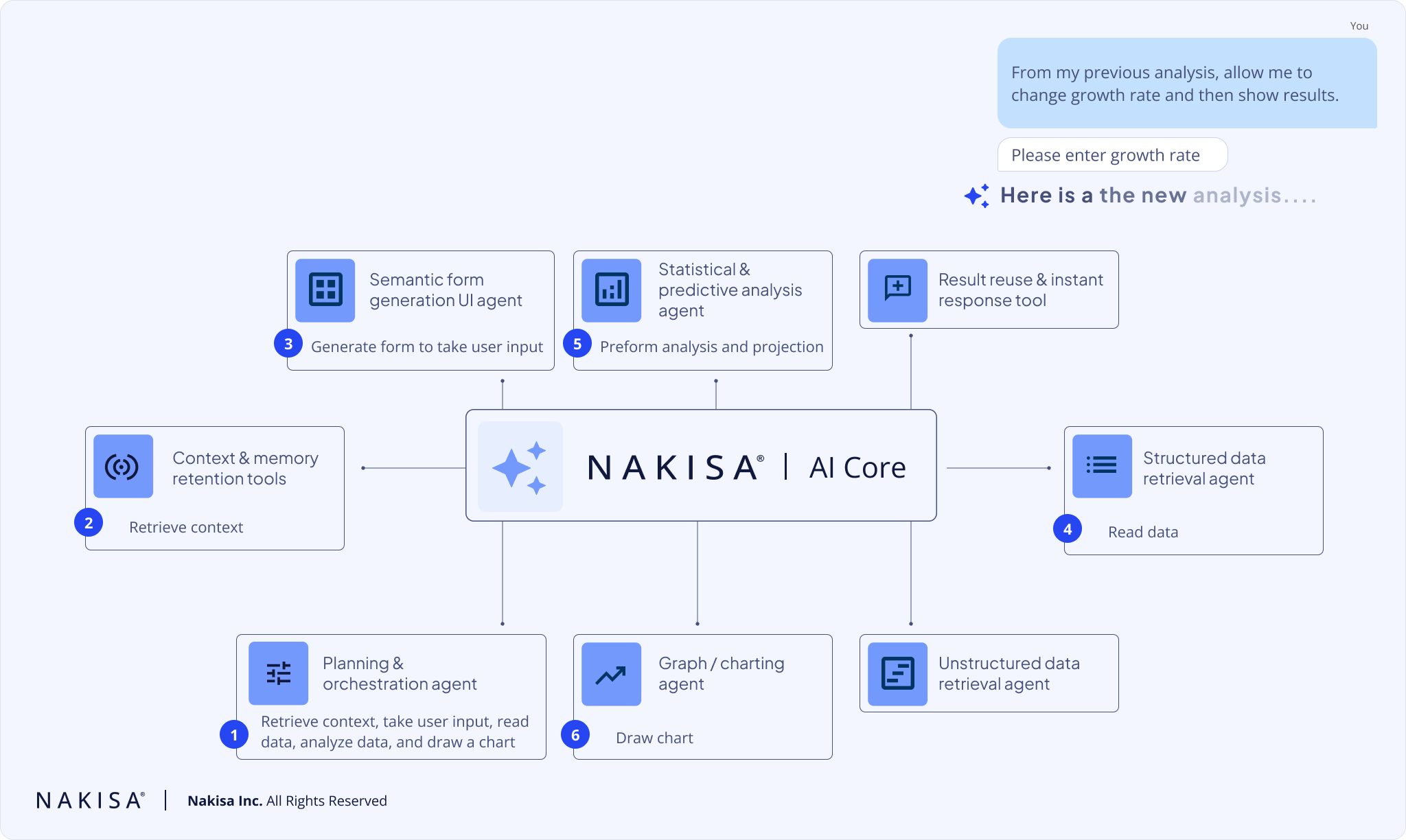
The Nakisa AI Core is designed to be smart, intelligent, and highly efficient. Rather than running every process at once, it selectively activates only the agents and tools required to fulfill the user’s request. Whether the task involves retrieving context, generating a form for additional input, analyzing data, or visualizing results, the AI Core orchestrates just the right components in the right sequence. This efficiency not only speeds up response times but also ensures precision, delivering exactly what the user needs, without unnecessary steps.
Agentic Extension Core (for external applications)
No system operates in isolation. The Agentic Extension Core allows the platform to host and integrate agents and UIs from external applications, extending its reach and capabilities. This means developers can connect existing tools, workflows, and third-party applications directly into the decision intelligence environment, creating a unified, extensible ecosystem. This capability is currently used for Nakisa applications (for Finance, Real Estate, and HR). I'll keep you posted on opening it up to applications outside Nakisa.
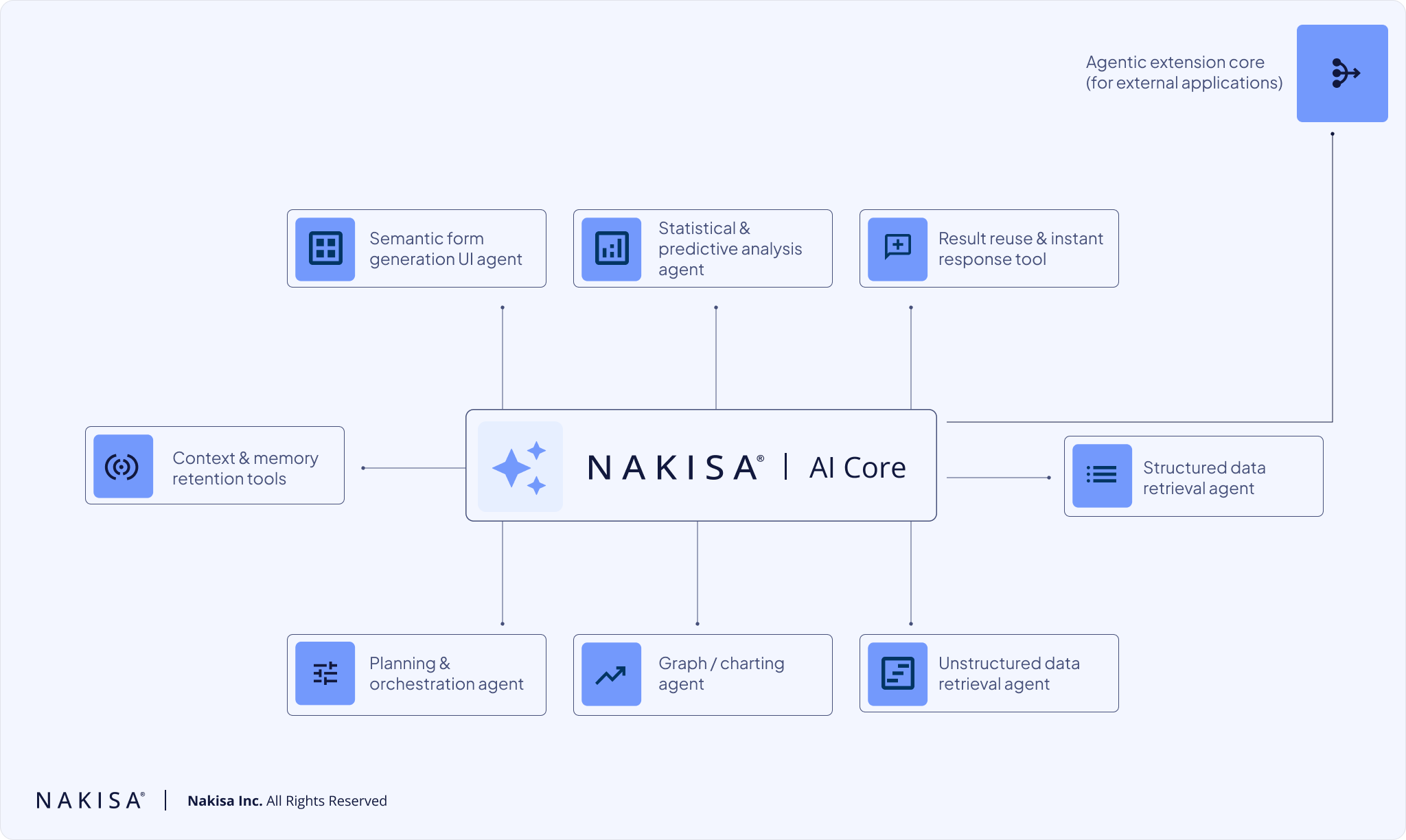
Why this matters
For leaders, this means independence. Instead of waiting for reports or manual analysis, insights become conversational, predictive, and instantly available.
For technical professionals, it shows how modern decision platforms are designed: modular, agent-driven, and built to scale across structured, unstructured, and predictive domains.
This blend of accessibility for decision-makers and rigor for technical teams is what makes Decision Intelligence truly transformative.
Final thoughts
In a world of constant change, organizations cannot afford to rely on siloed, static reports. The future belongs to leaders who can understand, predict, simulate, and act with speed and confidence.
Nakisa Decision Intelligence provides the tools to do exactly that—turning data into insight, insight into foresight, and foresight into action.
You can request a demo of NDI here, or reach out to your dedicated Client Success Manager to access the preview environment. I often write about AI and Nakisa innovations. Connect with me on LinkedIn for the latest updates!

